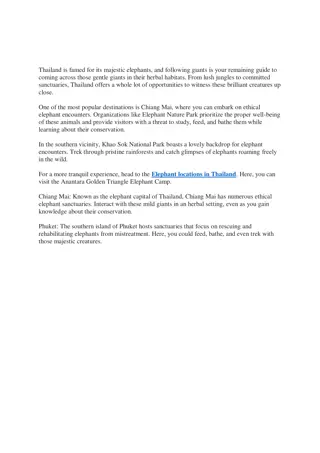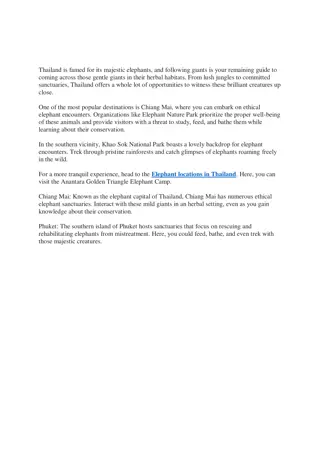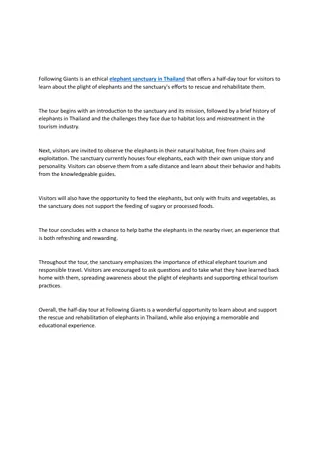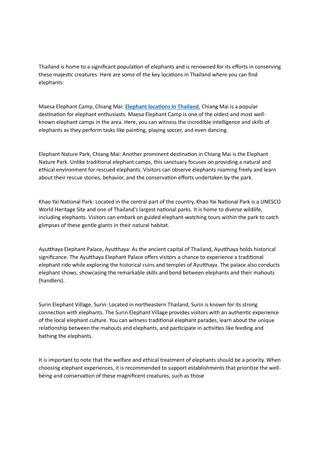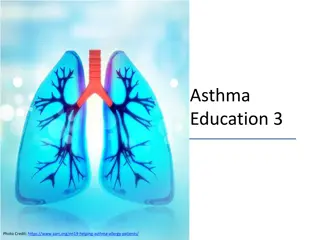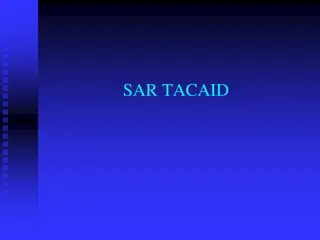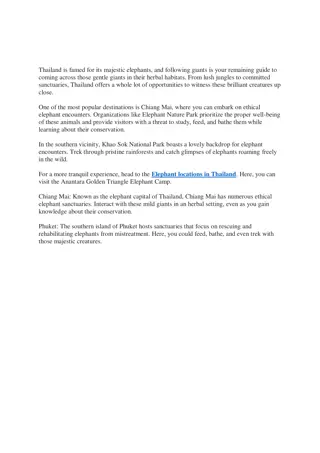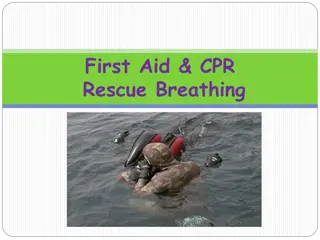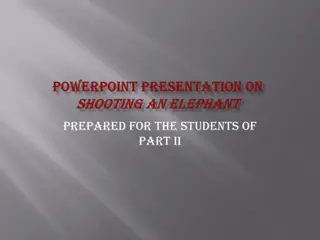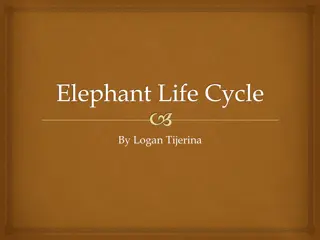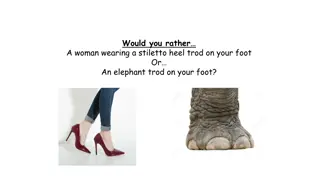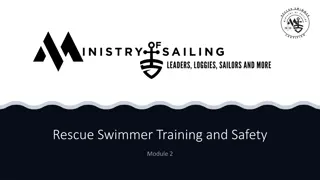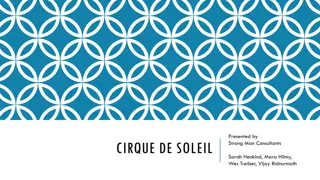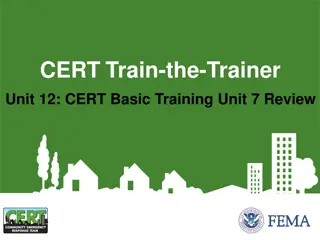Hands-on Activity: Designing a Solution for Circus Elephant Rescue
Engage students in a hands-on activity where they design a device to lift a stranded elephant back into a train car for the circus using simple machines. The scenario challenges students to solve the problem within constraints and considerations for both the circus administration and the safety of the elephant. Through this activity, students learn about the concept of work, identify simple machines, and understand why engineers are interested in such mechanisms.
Download Presentation

Please find below an Image/Link to download the presentation.
The content on the website is provided AS IS for your information and personal use only. It may not be sold, licensed, or shared on other websites without obtaining consent from the author. Download presentation by click this link. If you encounter any issues during the download, it is possible that the publisher has removed the file from their server.
E N D
Presentation Transcript
Hands-on Activity: A Simple Solution for the Circus Contributed by: Integrated Teaching and Learning Program, College of Engineering, University of Colorado at Boulder
Vocabulary Keywords: simple machines, inclined plane, wheel, screw, lever, pulley, wedge, brainstormin g, design, constraints, work
Learning Objectives After this activity, students should be able to: Recognize and identify the six simple machines. Define the concept of work. Explain why engineers are interested in simple machines.
Materials List Each group needs: Pencil, with eraser Ruler Colored pencil or marker (optional) 1-2 piece of white paper (can be used on one side) Copy of the Simple Solution Instructions
Introduction Today we are going to design a device to lift a heavy object an elephant. Following is the scenario: the Big Top circus travels from town to town by rail. On its way to your town, the circus train jumped track, and the rail car with the elephant inside tumbled over. Local rail line workers were able to get the train back on track, but the circus still has a problem: the elephant is not inside the rail car.
How do you suppose they can get the How do you suppose they can get the elephant back into the rail car? elephant back into the rail car? Your task as engineers is to move the elephant the six feet from the ground to the rail car (and therefore, successfully into the car!). The circus has very limited money for supplies, and you must design your process so the circus can get to your town by nightfall for their performance.
Who is your customer that you need to make Who is your customer that you need to make happy? happy? Well, the circus administration is certainly one, since they are hiring you. Can anyone think of another customer? Of course, the elephant! You need to make sure the elephant is happy, and not injured, during the process you design to get him back onto the train.
Pre Pre- -Activity Assessment Activity Assessment What are the six simple machines? Design Requirements and Constraints: Make a list of the problem's design requirements and constraints.
Procedure Procedure Get in groups of 3 Each group has 5 minutes to brainstorm ideas and discuss which idea they think is their most promising. Note: Materials used should be appropriate for what they are being used for. Example: You would not pick up an elephant with tissue paper.
Each group has 10 minutes to make a drawing on white paper that illustrates the device and explains how it will work. Note: No electronics or motors allowed only simple machines. It can be manually powered. An example could be a crank. Each group will have one minute to present their design, describing how it works and how it is put together.
Post Post- -Activity Assessment: On notebook paper. Activity Assessment: On notebook paper. What were some common solutions to the problem? Which were the most expensive designs? Were the less expensive designs feasible? How did the designs demonstrate the safety for the elephant? Why is the elephant's safety important to the circus?



